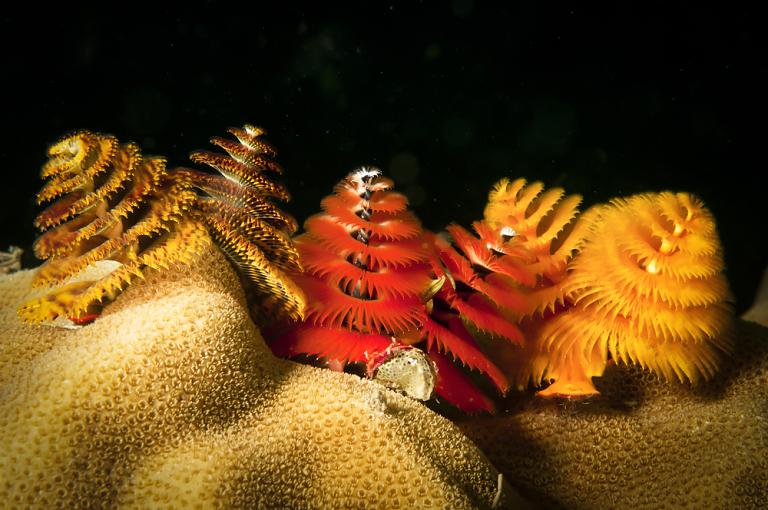
by Chris Verlinde | Dec 19, 2016
The holiday season is a special time for most of us! There are many creatures that live under the sea that represent many of our holiday traditions.
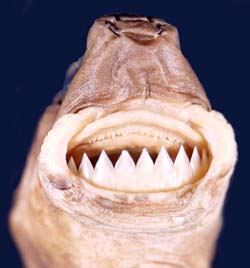
Photo Credit: Fl. Museum Of Natural History, George Burgess
Small cookie cutter sharks are found in very deep water during the day, at night they migrate up the water column to feed. Cookie cutter sharks attract their prey with lighted photophores. Photophores are lighted organs located on the lower part of the shark. Small fish are attached to the glow, larger fish searching for prey get close enough to the shark and the shark bites the prey. The cookie cutter shark has specialized sucking lips that attach to the victim. The shark then spins its body around and leaves a cookie cutter shaped hole in the fish.
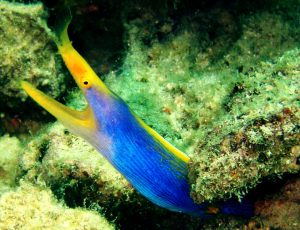
Photo credit: Wikimedia Commons
Ribbon Eels are found in the Indio Pacific. They have long slender bodies and move like ribbons in and through the crevices reefs. They eat live fish. To view a YouTube video of ribbon fish feeding, click here.
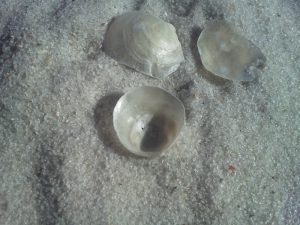
Photo credit: Chris Verlinde
Jingle shells get their name as a result of their shells that when shaken together make a jingle like sound. Jingle shells can be found along the beaches of NW Florida. The shiny iridescent shell is strong and very attractive. Many shell collectors use the shells to make jewelry and wind chimes.
Jingle shells are bivalves and live attached to hard surfaces, just like oysters.
Jingle shells are filter feeders, meaning water is filtered through their gills for plankton.
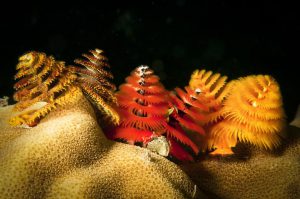
Photo credit: Wikimedia commons
Christmas tree worms are Christmas tree shaped worms that form burrows corals. The tentacles, which form the tree-like structures are used for feeding on plankton and to breathe. These plumed creatures are a type of polychaete worm.
Christmas tree worms come in many colors and can be found all over the world. They feed by using their feathery appendages, called radioles to capture phytoplankton that floats by the “feathers.”
Christmas tree worms are easily disturbed and will quickly vanish into their burrows as shadows or larger marine life pass by. They return quickly and continue with their sedimentary lifestyles in the coral.
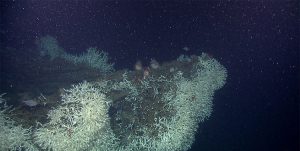
“Marine snow” falls gently on to a coral-covered shipwreck explored in the Gulf of Mexico in 2012 by the NOAA Ship Okeanos Explorer. Photo Credit NOAA
Marine snow gets its name as a result of the fluffy materials that resemble snow falling from the sky. Marine snow is decaying material from plants and animals that have died in the oceans. Marine snow may also include sand, fecal matter and inorganic dust.
Just like snowflakes, marine snow grows as it floats to the ocean depths. Marine snow is consumed by scavengers that live along the deep-sea floor bottom. Check out the video below showing the beauty of marine snow.
There are many more festive creatures that live in the sea. Have a wonderful Holiday Season!
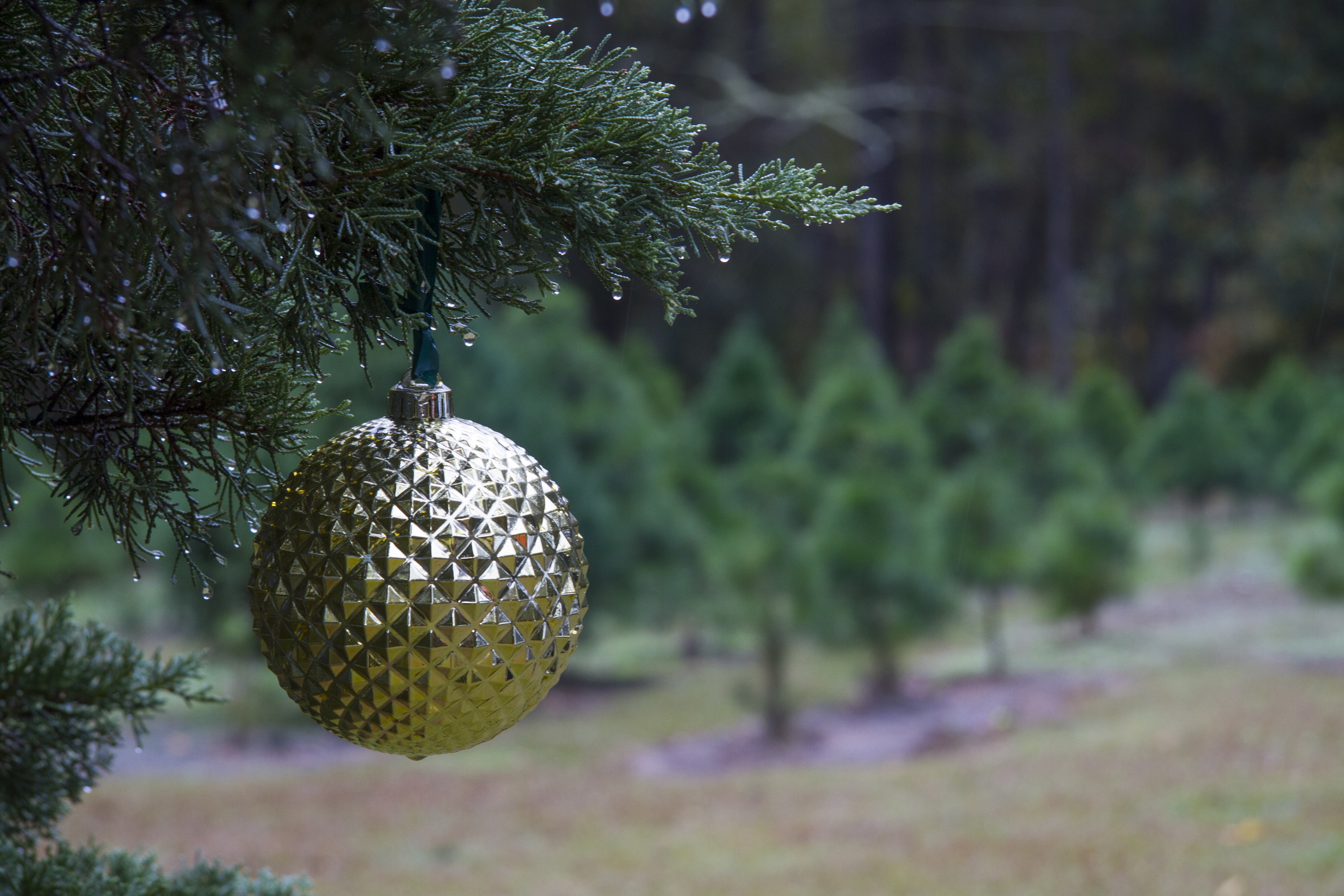
by hollyober | Dec 16, 2016
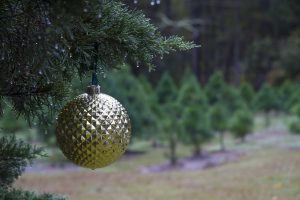
Christmas trees can provide benefits to wildlife long after they have served as holiday decoration indoors. Credits: IFAS photo database.
Americans purchased approximately 30 million live Christmas trees last year. If you plan to have a live tree this winter, and you’re wondering what you could do with your tree once it has finished its role as holiday decoration in your home, read below. Rather than simply dragging your tree to the curb for the waste disposal truck to pick up, you could prolong the life of your holiday tree by repurposing it to benefit wildlife.
YOUR TREE COULD PROVIDE FOOD FOR WILDLIFE
Many of the needles may have dropped from your Christmas tree as it dried out while indoors, but the branches should still be intact. This means your tree could be used as a frame to present food for wildlife. After removing your indoor decorations, consider propping the tree up in your yard (perhaps using the same stand you used indoors), and adorning the branches with food enjoyed by wildlife visitors. Some low-budget options include mesh bags filled with bird seed (black oil sunflower seed, safflower seed, and thistle (nyjer) are favorites of many common backyard birds), pine cones smeared with peanut butter, home-made suet cakes, and strings of fruit such as apple slices, orange slices, or grapes. If you choose this option, beware that you may attract not only birds, but mammals such as squirrels, raccoons, opossums, and others.
If you’d like to watch your wildlife visitors, be sure to attach the food items with string so that the animals must eat the food at the site of the tree rather than carrying it away to eat or store elsewhere out of view. Consider using a biodegradable string (i.e., cotton) to secure the food items to your tree so you can eventually compost the tree without worrying about needing to remove the string.
YOUR TREE COULD PROVIDE SHELTER FOR WILDLIFE
If you’re tired of seeing your holiday tree in its upright position, consider taking it outdoors, laying it down, and heaping other vegetative debris loosely on top to form a ‘brush pile’. Brush piles are mounds of woody vegetation created specifically to provide shelter for wildlife.
The lower portions of a brush pile can offer cool, shaded conditions that allow small mammals such as rabbits to hide from the weather and from predators. Meanwhile, the upper portions can serve as perch sites for songbirds. The entire pile may be used as resting sites for amphibians and reptiles. In yards with few understory trees or shrubs, and at times of year when many trees and shrubs have limited foliage, these brush piles can provide much-appreciated cover for many kinds of wildlife.
YOUR TREE COULD PROVIDE SHELTER FOR FISH
Your retired Christmas tree could be used to make long-lasting habitat improvements for fish. In artificial ponds with little submerged vegetation, the addition of one or more Christmas trees could upgrade the quality of refuge and feeding areas for fish. Small fishes may hide among purposely submerged Christmas trees for protection, and larger fishes may follow them. If you’ve got an artificial pond on your property, consider adding discarded trees to create a place where fish can hide and find food, and also to concentrate fish for angling. Simply secure a cinder block to your holiday tree using heavy wire or thin cable and place it far enough from shore that water covers the top of the tree by a couple of feet. When constantly submerged, Christmas trees can persist for many years underwater.
Not only can your tree offer enjoyment to you when decorated with lights and ornaments indoors, but it can also allow you to provide post-holiday gifts to the wildlife and fish on your property.
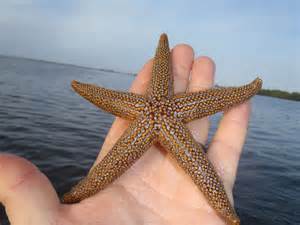
by Rick O'Connor | Dec 16, 2016
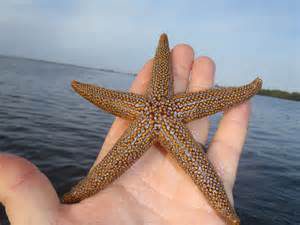
The Florida Orange Sea Star.
Photo: Florida Sea Grant
One of the more popular traditions this time of year is placing the star on top of the Christmas Tree. The star represents the Christmas Star which led the wise men to the manager. The stars that have been placed on Christmas Trees over the decades have come in all shapes and forms but gulf coast residents will use a starfish to both represent the Nativity and their connection to the sea.
Starfish, more correctly called sea stars, are one of the most recognized marine creatures in the world. Many have used it as a logo or their symbol of the sea. But what is a sea star actually? We know they live on the bottom and look like stars but what do they do? How do they function?
Sea stars are invertebrates in the Phylum Echinodermata. Echinoderms have radial symmetry; meaning they have a distinct top and bottom but no head or tail. You certainly know if it is upside down but you are not sure if it is facing you. They are the only invertebrates to have an internal skeleton; called a test. It is this skeleton we find in the curio shops and stores – and what we place on our tree. This skeleton produces tubercules or spines which extend into (and above) the skin – giving them the “spiny skin” for which they get their name – “echino” “derm”. Echinoderms have a series of tube like sacs underneath their bodies which they fill with water and use like suction cups to move and feed. Most have male and females and all produce planktonic larva.
Sea stars in particular are found worldwide and are more common in coastal waters. They come in a variety of colors and most have five arms – though one species has 40! Their mouth is on the underside of the body and lacks teeth. They have a pigment spot at the end of each arm that can detect light. Some sea stars are attracted to light, while others are repelled by it. Most sea stars are carnivorous, feeding on a variety of invertebrates including other echinoderms, and some are scavengers. Mollusk are a common prey, and – to the dismay of oyster farmers – oysters are an easy prey. The sea stars approach the bivalve, use their tube feet to open the two shells slightly, and insert their digestive tract inside the oyster. They attack the abductor muscle first, release the tension on the two shells, and then consume the rest of the animal. Sea stars like seawater, so oysters growing in the upper estuaries have fewer problems with these predators. Our local sea stars are good at detecting buried prey in our quartz sand and then digging them out. These animals are famous for their ability to regenerate their body parts. Oyster farmers trying to reduce this threat have been known to cut them and toss them back, only to have more sea stars later. However sexual reproduction is also very common. Most sea stars have 2 gonads per arm and can fertilize up to 2 million eggs in a spawning event. Spawning is usually in the spring and is triggered by chemicals in the water.
Though they are a classic icon for the ocean, and holiday decoration along the coast, these are fascinating animals in their own right. I wish all of you Happy Holidays and a joyous new year.
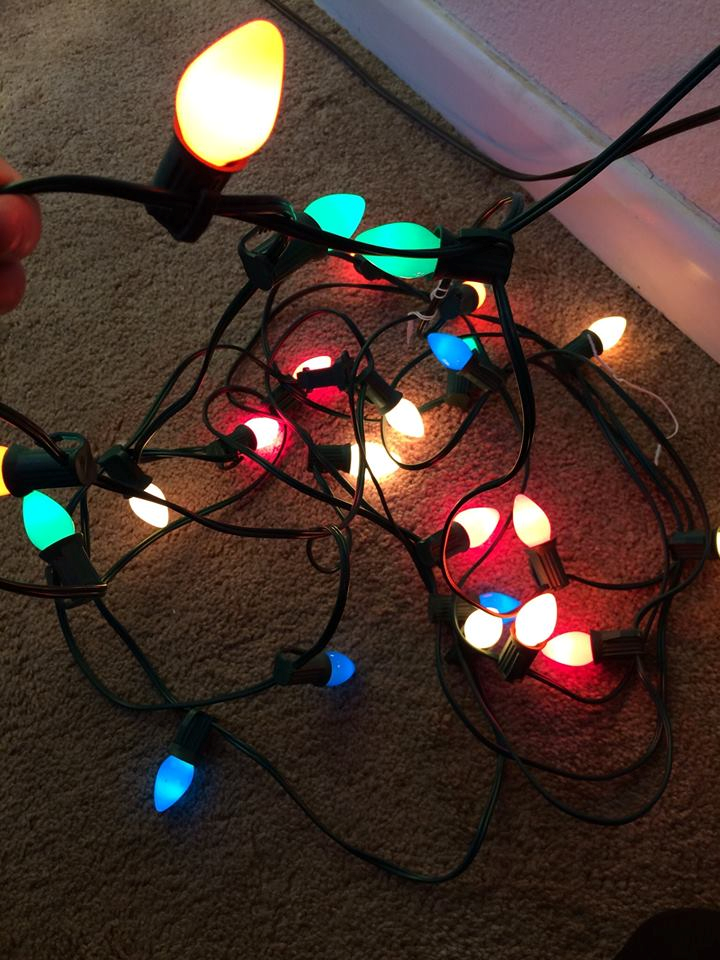
by Carrie Stevenson | Dec 5, 2016
I don’t know about you, but my kids have a lot of “stuff.” Legos on my son’s floor, stuffed animals surrounding my daughter’s room—it’s a lot to keep up with. Granted, they have never thrown away a Lego brick or stuffed animal, so they’re not contributing to the landfill (only my lack of sanity), and they have used these gifts for many years. When they outgrow them, we will donate their toys to another family or thrift shop. However, as a group, we Americans generate 25% more waste during the holidays (between Thanksgiving and New Year’s), the equivalent of about 1 million extra tons of garbage.

Music lessons are a gift that keeps on giving–and can result in a skill lasting a lifetime. Photo credit: Eric Stevenson
As I, and my children, have gotten older, it’s been more important to me to give the gift of experiences, or at least something that they can use for a long time. Tickets to a concert or sports event, music lessons, or a trip to someplace new will result in lifelong memories and skills without the packaging waste or clutter in the house.
Passing on an antique piece of jewelry or their grandfather’s tool set can be inexpensive for you but priceless for the recipient. Last year my kids’ great-aunt gifted them with honeybees for a family from Heifer International, and it was an amazing opportunity to discuss selfless giving and the needs of others. Many folks would love to receive a donation in their name to their favorite charity as a gift.
When it comes down to it, though, giving tangible gifts is often expected, wanted, or even needed. So how can we do this without contributing to 2017’s landfill? First, look at packaging. Many companies are trying to consciously reduce the amount of plastic, paper, and space used to ship and package their items. If you do get lots of extra packaging, be sure to recycle it. I’m a huge believer in reusable gift bags—I’ve been passing some back and forth to family members for years—and some gifts can be given in a useful container, such as a wooden bowl, a platter, or reusable cloth bags. Other gift ideas include clothing (I got a shirt last year made from recycled water bottles) and toys made from recycled materials. Plants, whether houseplants or a tree for the yard, make for long-lasting, beautiful gifts, and consumables like homemade food are meaningful and inexpensive.
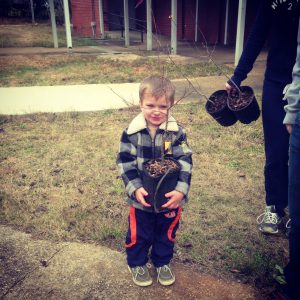
Consider giving plants as gifts–they are long-lasting and have many societal and environmental benefits. Photo credit: Carrie Stevenson
Finally, consider the companies producing the gifts you give. Forbes’ list of the 50 Most Sustainable Companies highlights corporations that are making a concerted effort to reduce energy and water use. This can make a big difference when you consider the worldwide reach and influence of companies like Adidas (#5) or Coca-Cola (#13).
We at UF IFAS Extension wish you all a wonderful, memorable, and safe holiday season. This time of year can be overwhelming, though, so if you need help managing stress, check out this publication from our Family, Youth, and Consumer Sciences department!
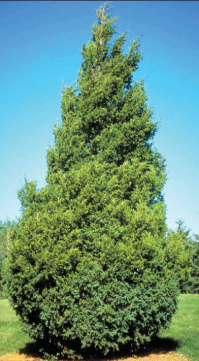
by Sheila Dunning | Dec 5, 2016
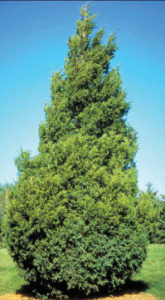 Throughout history the evergreen tree has been a symbol of life. “Not only green when summer’s here, but also when
Throughout history the evergreen tree has been a symbol of life. “Not only green when summer’s here, but also when 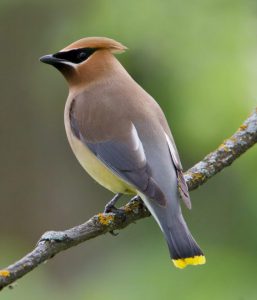 it’s cold and dreary” as the Christmas carol “O Tannenbaum” says. While supporting the cut Christmas tree industry does create jobs and puts money into local economics, every few years consider adding to the urban forest by purchasing a living tree. Native evergreen trees such as Redcedar make a nice Christmas tree that can be planted following the holidays. The dense growth and attractive foliage make Redcedar a favorite for windbreaks, screens and wildlife cover. The heavy berry production provides a favorite food source for migrating Cedar Waxwing birds. Its high
it’s cold and dreary” as the Christmas carol “O Tannenbaum” says. While supporting the cut Christmas tree industry does create jobs and puts money into local economics, every few years consider adding to the urban forest by purchasing a living tree. Native evergreen trees such as Redcedar make a nice Christmas tree that can be planted following the holidays. The dense growth and attractive foliage make Redcedar a favorite for windbreaks, screens and wildlife cover. The heavy berry production provides a favorite food source for migrating Cedar Waxwing birds. Its high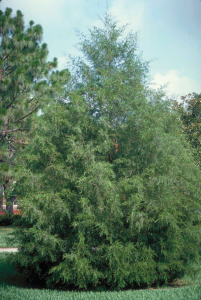 salt-tolerance makes it ideal for coastal locations. Their natural pyramidal-shape creates the traditional Christmas tree form, but can be easily pruned as a street tree. Two species, Juniperus virginiana and Juniperus silicicola are native to Northwest Florida. Many botanists do not separate the two, but as they mature, Juniperus silicicola takes on a softer, more informal look. When planning for using a live Christmas tree there are a few things to consider. The tree needs sunlight, so restrict its inside time to less than a week. Make sure there is a catch basin for water under the tree, but never allow water to remain in the tray and don’t add fertilizer. Locate your tree in the coolest part of the room and away from heating ducts and fireplaces. After Christmas, install the Redcedar in an open, sunny part of the yard. After a few years you will be able to admire the living fence with all the wonderful memories of many years of holiday celebrations. Don’t forget to watch for the Cedar Waxwings.
salt-tolerance makes it ideal for coastal locations. Their natural pyramidal-shape creates the traditional Christmas tree form, but can be easily pruned as a street tree. Two species, Juniperus virginiana and Juniperus silicicola are native to Northwest Florida. Many botanists do not separate the two, but as they mature, Juniperus silicicola takes on a softer, more informal look. When planning for using a live Christmas tree there are a few things to consider. The tree needs sunlight, so restrict its inside time to less than a week. Make sure there is a catch basin for water under the tree, but never allow water to remain in the tray and don’t add fertilizer. Locate your tree in the coolest part of the room and away from heating ducts and fireplaces. After Christmas, install the Redcedar in an open, sunny part of the yard. After a few years you will be able to admire the living fence with all the wonderful memories of many years of holiday celebrations. Don’t forget to watch for the Cedar Waxwings.

















